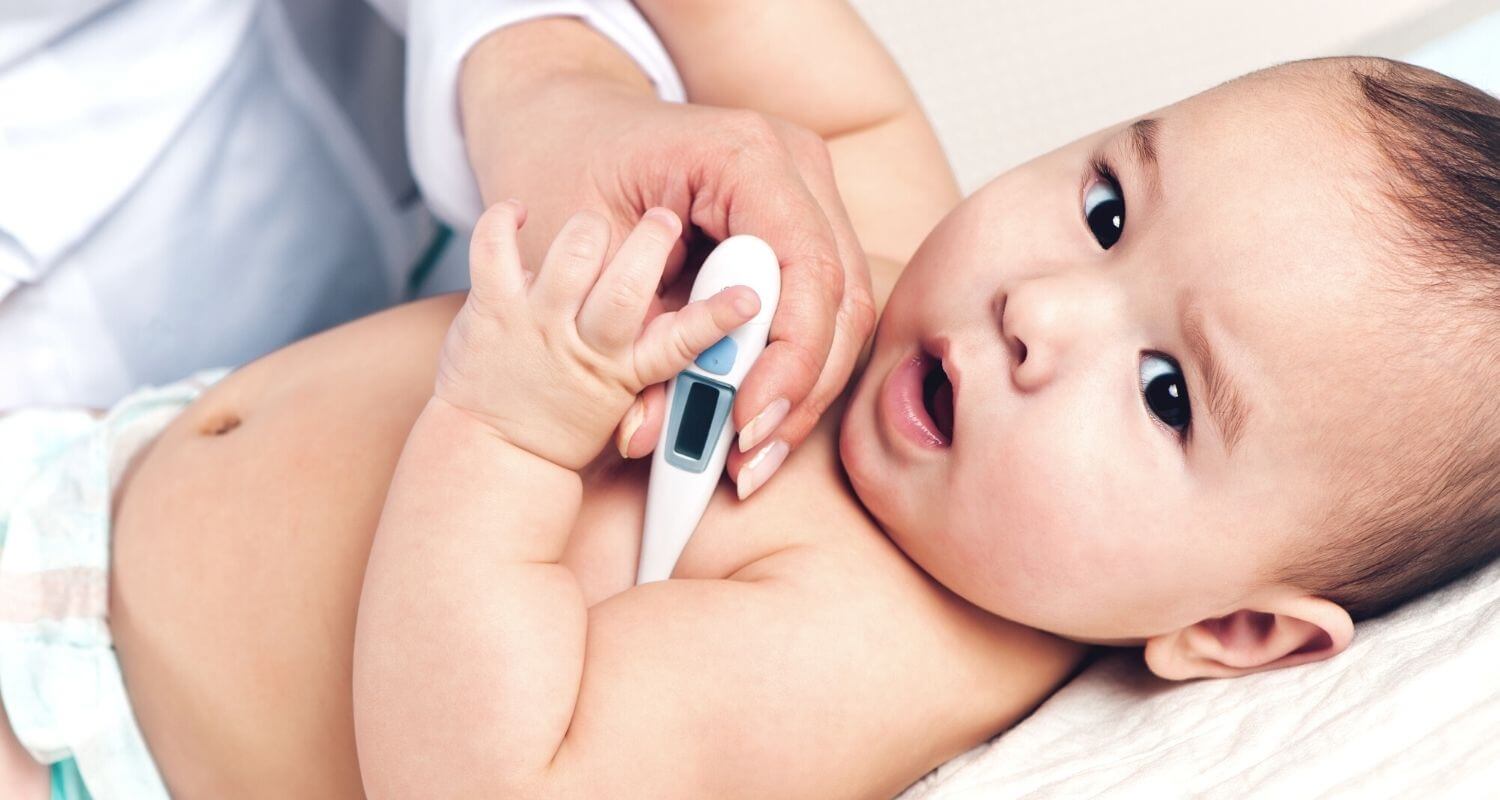It’s natural to wonder what’s a normal temperature for a baby. Are they wearing enough? Is the nursery too warm? What’s considered a fever? It’s not easy to tell with a newborn!
We try our best to make our baby feel comfortable and secure, but it’s not always simple to know if they are too warm or too cold. Here is a little guidance and a few tips to help you out.
Normal temperature for a baby
Having a little fever is pretty common for little children. It could be due to teething or being sick, and doesn’t need to automatically raise concern. What’s considered a feverish temperature for a baby varies by age. Typically, a healthy baby’s temperature ranges between 36.6°C to 37.2°C.
For a baby younger than 3 months old, 38°C can present a potential emergency and you should consult a doctor. At that age, a child’s immune system isn’t well developed yet. That’s why it’s important to be watchful and react quickly.
For babies older than 3 months old, you don’t need to worry as much when they get a little fever. When we have fever, it’s actually a sign that our body is fighting infections. So it’s not necessarily a bad thing to get a little temperature. Even with a young child, drinking plenty of fluid and plenty of sleep are all that’s needed for the fever to run its course.
Depending on your baby’s age, it is possible to ease the fever’s symptoms with medication. Consult your pediatrician for the appropriate medicine and dosage.
How to take your baby’s temperature
Rectal, oral, ear or under the armpit? There’s different temperatures depending on the type of thermometer you use and different options depending on how old your baby is .
Normal temperature for a baby
Depending on which body part is being measured, there’s different normal baby temperature ranges:
- Ear: 35.8°C to 38.0°C
- Mouth: 35.5°C to 37.8°C
- Armpit: no higher than 37.3°C
- Rectum: 36.6°C to 38.0°C
Taking your baby temperature depending on its age
Taking rectal temperature is the most accurate, yet not always the preferred method for comfort. Here’s an idea of appropriate options according to age.
Always read the instructions that come with the thermometer before use.
- Birth to 3 months: use a typical digital thermometer to take a rectal temperature.
- 3 months to 4 years: for this age range you can use a digital thermometer to measure their temperature via their rectum or armpit. You may also use a temporal artery thermometer. Still, it’s best to wait until your baby is at least 6 months old to use a digital ear thermometer.
- 4 years and older: From 4 years old and onwards, most children can hold a digital thermometer under the tongue to get an oral temperature reading. Other convenient options are a digital thermometer to take an armpit temperature, a temporal artery thermometer, or a digital ear thermometer.
What are the symptoms of a baby fever?
Like we said, a fever is not necessarily a bad thing. Whether it’s caused by a cold, a light infection, or teething, it’s quite easy to determine if your baby has a mild fever or if you should feel concerned.
Physical and behavioral signs of a baby fever
- Baby is shivering,
- A hot or flushed forehead, back or stomach,
- Baby is abnormally irritable,
- Loss of appetite,
- Temperature above 37.5°C (depending on body part).
Natural ways to alleviate a baby’s temperature
- Dress your child with lighter clothing, preferably with cotton or natural fibers.
- For babies up to 6 months old: increase milk feeds for babies or offer smaller feeds more frequently.
- For babies over 6 months old: give fluids regularly, including water in addition to milk.
Hope this advice is helpful and avoids worrying unnecessarily.
Want to learn more about natural remedies? Check out my article about healing baby eczema.
Until next time, Tania xx
*This article is provided for informational purposes only, and does not intend to substitute professional medical advice, diagnosis, or treatment.

